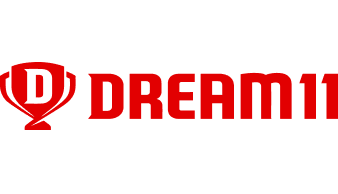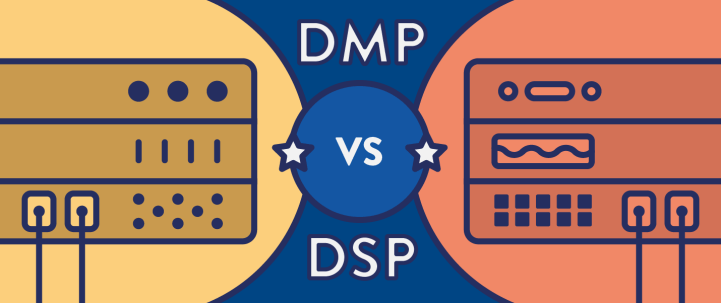It’s a small world (after all) — thanks to big data.
Businesses have become more reliant on the data they collect than ever before; data influences advertising decisions, business strategies, marketing campaigns, and countless other initiatives.
As mobile marketers, we must be aware of how real time customer data can shape our decisions, but also be aware of how time-sensitive this data is. Actionable customer data is like the self-destructing intelligence briefing in a Mission Impossible film, you must act quickly or risk failing the mission.
In this article, we cover what mobile marketers must understand about demand-side platforms (DSPs) versus data management platforms (DMPs) and how they can be combined. Together, these tools can be used to bid, serve, and optimize digital ad placements to enhance your marketing strategy.
A Brief Introduction to DSP and DMP
DSPs and DMPs are standalone tools that can also be used in tandem. But before we can understand how to use them successfully together, we must understand each part separately.
First we’ll introduce the demand-side platform and how it became the de facto method for serving digital ads.
What Is a Demand-Side Platform (DSP)?
DSP stands for demand-side platform and is a medium that connects marketers and advertising buyers with their digital media placements. Simply put, marketers need a way to accurately monitor and bid for ad placements — DSPs fill this void.
The DSP also enables marketers to manage their ad inventory across multiple ad exchanges from one central interface. 
Consider the process of purchasing advertisement placements only a few years ago. Ad buyers would meet with publishers to discuss the location, duration, and frequency of the placement before agreeing upon price — and never truly able to measure performance.
Today, publishers sell their advertising space through supply-side platforms (SSP) and advertisers bid for these ad placements on the demand-side platform (DSP). In fact, DSPs allow bidding for ad placements to happen efficiently in real time — typically within milliseconds before the advertisement renders on the user’s device. These ad exchanges are the marketplace where supply and demand meet.
DSPs are the holy grail for marketers — allowing them to optimize for their key performance indicators such as effective cost-per-click (eCPC) or effective cost per action (eCPA). DSPs allow marketers to efficiently bid on, serve, track, and optimize ads.
Now that we have a basis of understanding what a DSP is, let’s introduce the DMP.
What Is a Data Management Platform (DMP)?
A data management platform (DMP) is used to connect first-, second-, and third-party data both online and offline for analysis, audience segmentation, and retargeting.
First-party data is the data you collect on current customers, second-party data is collected by strategic partners such as Facebook’s ad manager, and third-party data is purchased — usually from a data collection firm (think Nielsen).
In today’s marketing landscape, the ability to track, segment, and target customer engagements with your company across multiple channels is essential for achieving the level of personalization customers expect.
For example, if a company understands the service life, technical life, and shelf life of their product, they can combine this information with each individual customer’s purchase date to retarget those customers who are likely ready to make another purchase.
When using a DMP, you can collect, combine, and capitalize on omnichannel data to personalize your marketing strategy, target advertisements more effectively, and more. 
Programmatic Advertising
Collecting data to serve advertisements is not a new school of thought, but new strategies — including the sophisticated segmentation enabled by DMPs — have emerged from the rapid transition to digital marketing.
Programmatic advertising, one such technology, is used by DSPs to bid on and place ads in real time. This allows ads to be shown to the right people at the right time. Tracking pixels, for example, provide information to marketers in order for ads to target site visitors who left without converting.
Omnichannel data collection using DMPs and the sophisticated ability of companies like CleverTap to segment and utilize this data allows businesses to become more successful advertisers.
Let’s learn more about what a DSP is and how demand-side platforms have grown in popularity among digital marketers and advertisers.
What Is a DSP Used For?
A good analogy for a DSP is a financial brokerage. The advertiser (investor) uses a DSP (brokerage account) to purchase ad placements (stocks and other financial instruments). The ad placement is purchased (order fulfillment) on the ad exchange (open market).
Simply put, DSPs communicate with SSPs (supply-side platform) through ad exchanges to place advertisements.
The advertiser or media buyer interfaces with the DSP, which uses real-time bidding (RTB) to negotiate a price per impression on the SSP. The price per impression is typically calculated on a cost per thousand (CPM) basis. Once they negotiate a price, the ad is shown on the publisher’s site.
DSPs enable advertisers to purchase ads at their desired CPM, which offers greater control over the campaign’s budget and performance.
What Is a DMP Used For?
Real-time insights, segmentation, personalization, and customer lifecycle management are all possible with a DMP.
Customer insights such as mapping the customer journey, tracking app uninstalls/attrition, and analyzing user behaviors allow marketers to test engagement and retention strategies, as well as tailor the experience for individual users.
Powerful segmentation, including RFM (recency, frequency and monetary value), allows marketers to uniquely target various cohorts and stages of the marketing funnel.
DMP vs. DSP: How They Differ
DMPs are the tools used to collect customer data effectively, while DSPs are focused primarily on data regarding campaign placement, performance, and audience engagement with the advertisement itself.
DMPs collect data from multiple sources including the first-party analytics, CRM, POS, and more; second-party data from strategic partners; and third-party data from external suppliers. 
DMPs can be used for multiple end-goals:
- Advanced analytics including acquisition, engagement, and retention.
- Audience segmentation (psychographics, behavioral, demographic, etc.).
- Omnichannel and multichannel marketing.
DSPs, on the other hand, were not built to collect large amounts of data. They were built with one goal in mind: optimize the bidding and placement process for advertisements.
What Is a Hybrid Between DMP and DSP?

As ad-tech matures, many businesses frantically move to consolidate and integrate the DMP within the DSP, and vice-versa. The DMP/DSP hybrid was born out of convenience. This seems great, since managing a single platform is easier than two separate platforms, but there are some considerations to keep in mind.
DMP vs. DSP or DMP/DSP Hybrid: Which Is Better?
Should you use a standalone DMP and DSP or a hybrid of both?
Ultimately, the choice depends on your business goals, security needs, etc., but it’s important to weigh the pros and cons. Companies that focus on solving a single problem (ie. DSP or DMP only) are likely to be more adept at addressing their respective functionality versus companies that try to take on too much complexity.
Below are some reasons in favor of using the DSP/DMP hybrid:
- Your marketing team does not have the budget to hire specialists to manage each tool separately.
- The goal is to simplify the management of customer data and digital ad buying.
- Customer acquisition costs and strategies for your business are straightforward.
And reasons you may consider using a DSP and DMP separately:
- Customer data is unique, unstructured, and complex, requiring a more granular analysis.
- Sophisticated analytics of your customer data is more important to your business model than digital advertising.
- Your growth and customer acquisition strategy consists of various attribution funnels and marketing channels.
At CleverTap, our intelligent mobile marketing platform includes sophisticated data management that integrates with Google Ads and Facebook Ad Manager. Sign up for a demo to learn how you can segment your users, connect with them across platforms, and retarget them with personalized ads through the popular ad platforms.

See how today’s top brands use CleverTap to drive long-term growth and retention
Subharun Mukherjee 
Heads Cross-Functional Marketing.Expert in SaaS Product Marketing, CX & GTM strategies.
Free Customer Engagement Guides
Join our newsletter for actionable tips and proven strategies to grow your business and engage your customers.














































